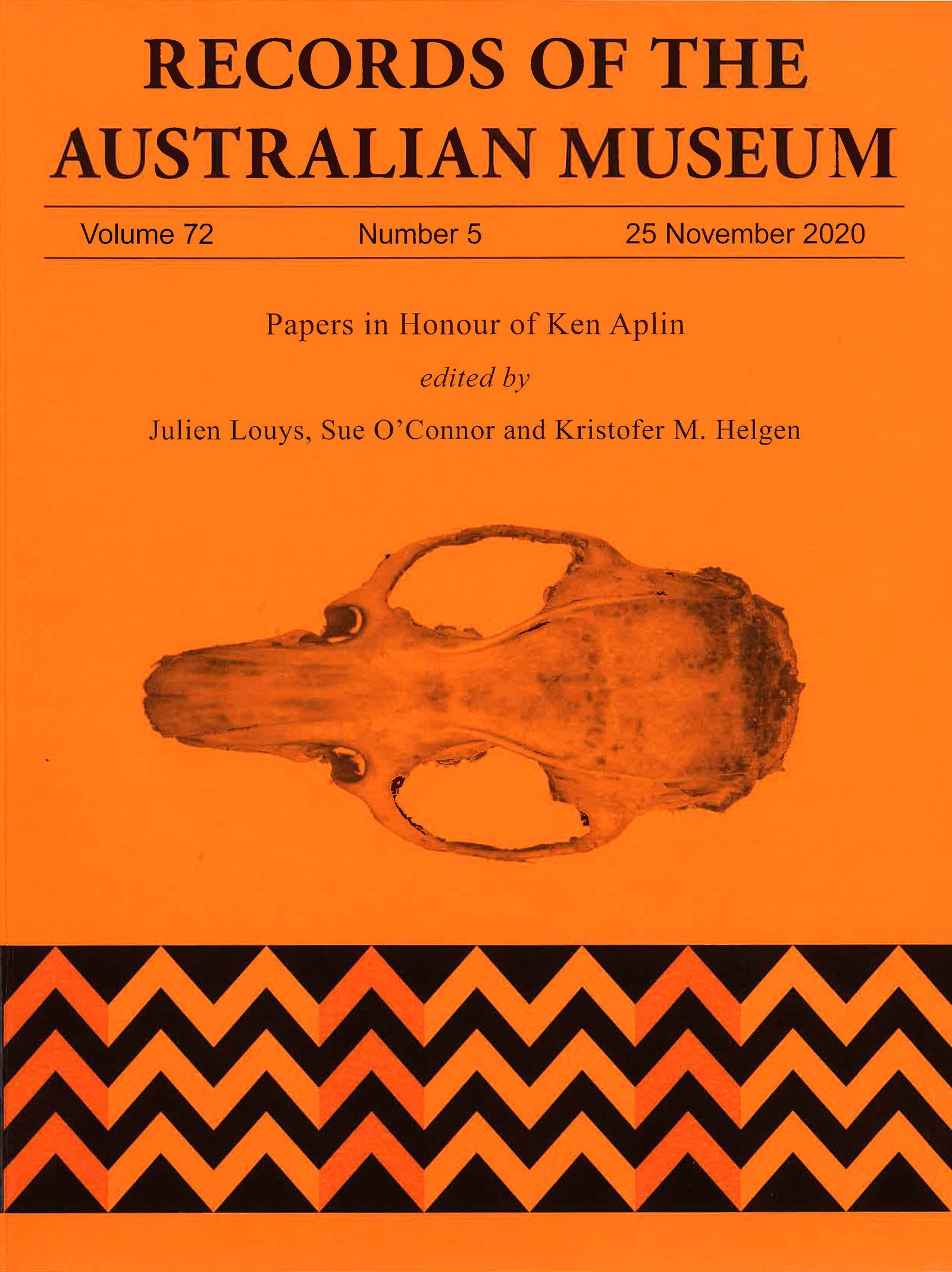The lives of creatures obscure, misunderstood, and wonderful: A volume in honour of Ken Aplin 1958–2019
Kenneth Peter Aplin (1958–2019) was one of Australia’s leading vertebrate systematists, well known as an anatomist, mammalogist, herpetologist, palaeontologist, and archaeologist – he was an altogether unique and admired man. For this month’s Records of the Australian Museum, we honour him in a special edition. Vale, Ken Aplin.
“He was always a modest man, but Ken was a genius and the toughest man we knew. He was also extraordinarily generous of spirit. The way he gave of himself, his time, and his hard-won stores of knowledge, was legendary amongst his friends and colleagues. We admired him and we loved him.”
These are the opening words from editors Kristofer M. Helgen, Julien Louys, Sue O’Connor, for the special edition of the Records of the Australian Museum, a collection of papers in Honour of Ken Aplin. The opening lines touch on some of the marvellous qualities of Ken; he was what many would refer to as a ‘Renaissance man.’ Not only was Ken a polymath in a number of diverse areas but also a man rich in personality – he was extremely humorous, truly grounded and extraordinarily resilient. In fact, he chalked up most of the tropical diseases in the tropical disease textbook!

Ken Aplin in his element in 2016, digging a late Holocene faunal deposit in southeastern NSW.
Image: Brad Pillans© Brad Pillans
Although an expert in many areas, of all the many groups of animals that he studied, he was most passionate about the genus Rattus, among the most diverse and successful of all modern mammalian genera. The cover image depicts the skull of one of the most recently described members of the genus, Rattus detentus (AM M.45608, the holotype), known only from the large and isolated island of Manus in the Admiralty Archipelago of Papua New Guinea. The species was named by Timm, Weijola, Aplin, Flannery, and Pine, in 2016. Little is known about the biology of the species, so far. Ken developed an unusually acute “eye” for distinguishing taxa in vertebrate groups often considered very challenging to systematists, like Rattus. This skill was borne in part of extensive fieldwork, especially in New Guinea, Australia, and across Asia. This let him encounter many different groups of animals firsthand and to develop a remarkable ability for understanding them on their own ground.

Cover image of Records of the Australian Museum Louys, O’Connor & Helgen. 2020. Rec. Aust. Mus. 72(5). Image includes the skull of Rattus detentus. https://doi.org/10.3853/j.2201-4349.72.2020.1724
Image: Louys, O’Connor & Helgen.© Louys, O’Connor & Helgen.
Where most mammalogists would bring rat traps, Ken would bring a shovel, and he would get to work in the landscape around him, digging burrows out of the ground to uncover rats that the trapper rarely sees. Of course, his careful work as a systematist and anatomist also sprang from a career spent within the world of natural history museums and their collections, the primary resource that biodiversity scientists use to develop their skills and undertake their work. From his earliest days as a scientist, he also showed an abiding interest in archaeology, and the study of faunal remains in archaeological contexts was a major strand that wove across his career. In this volume, the Australian Museum celebrates the career of an extraordinary fieldworker and museum scientist who made enormous contributions to the study of Asia-Pacific biodiversity, present and past.
Many obscure, misunderstood and wonderful creatures were studied and named in Ken’s honour, one of the highest forms of recognition in the world of natural history. When we remember Ken, we also remember these beautiful and rare creatures, and be reminded of what a rare and beautiful soul the man was.
More information:
Louys, Julien, Sue O’Connor, and Kristofer M. Helgen, editors. 2020. Papers in Honour of Ken Aplin. Records of the Australian Museum 72(5), pp. i–ii, 149–337. Sydney: Australian Museum. https://doi.org/10.3853/j.2201-4349.72.2020.1724

